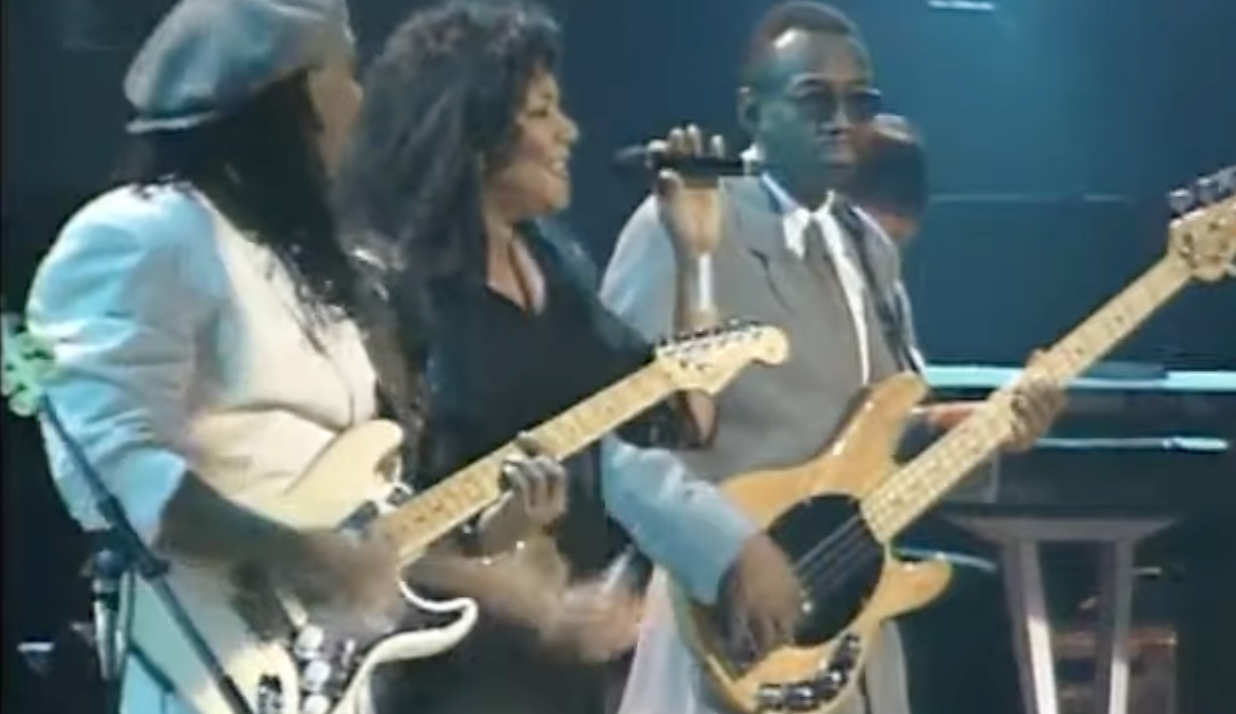Bernard Edwards’ ‘Le Freak’ bassline
The formidable writing partnership of Nile Rodgers and Bernard Edwards penned many genre-defining disco grooves not only for Chic and Sister Sledge, but also for internationally successful artists such as Diana Ross (‘I’m Coming Out’ and ‘Upside Down’) and Debby Harry. Bernard’s bass part on Chic’s ‘Le Freak’ is one of his best known, showcasing many of the skills that made him such a respected and influential bassist.
‘Le Freak’ appeared on 1978’s “C’est Chic” album (alongside other hit ‘I Want Your Love’) and was written after an unsuccessful attempt to get into New York’s infamous Studio 54 nightclub on New Year’s Eve 1977; the original lyric that got replaced with “Freak out!” was a rather less charming two word phrase beginning with “F” that was intended for the club’s doormen…
Here’s the note-for-note transcription of everything Bernard played on ‘Le Freak’:
Chic – ‘Le Freak’ bass transcription PDF
And here’s an in-depth look at the verse groove, alongside some essential concepts that I use and teach:
‘Le Freak’ bassline analysis
- The song begins with the chorus, a sparse and simple line that has Bernard coming in on the ‘and’ of beat 4 before marking the downbeat. Even though this part isn’t complex, notice how Bernard adds a subtle variation to keep the listener engaged; the As on beat 1 alternate between being played long, followed by a slide, and staccato.
- Bar 9 features the classic Bernard Edwards fill, a rapid octave figure that bounces off the open E string before ascending chromatically back to the root of the A minor chord.
- The verse groove (bars 10-11) is a repeating two bar phrase that features syncopated 16th-note rhythms, muted notes, and consistently staccato articulation – keep that fretting hand bouncing on the string between notes to keep everything short.
- Verse 2 has an ear-grabbing variation half way through (bar 23) to keep things interesting; I opt to play this around the 10th fret on the A and D strings to keep the sound as thick as possible.
- The bridge section (bars 42 – 69) might prove to be a test of your stamina. This is by far the most technically demanding portion of the tune, and it’s worth experimenting with both open string and fretted root notes for the Am and D chords to find the best option for your technique. (Adipex)
You can find more Bernard Edwards in this edition of Groove of the Week.

